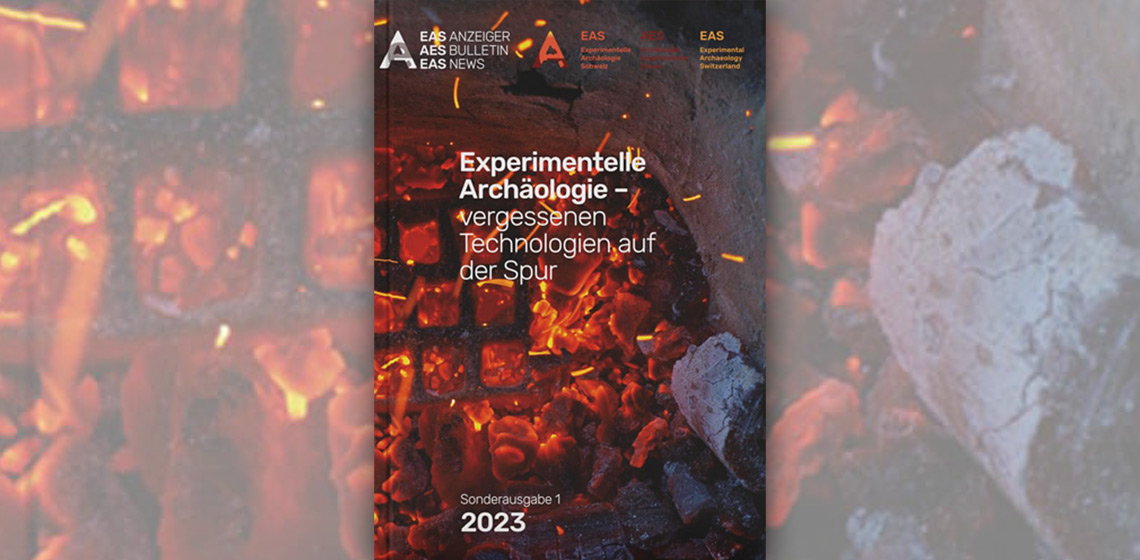The content is published under a Creative Commons Attribution Non-Commercial 4.0 License.
Unreviewed Mixed Matters Article:
Book Review: Experimentelle Archäologie – Vergessenen Technologien auf der Spur

In 1998, the association Experimental Archaeology Switzerland (EAS/AES) was founded in Switzerland. The AES emerged from its predecessor AEAS, which was launched in Zürich in 1993. The declared aim was and is the promotion of experimental archaeology in the Alpine Republic. The AEAS official newsletter Generalanzeiger, has been published annually since 1994. This was initially intended to facilitate contact between the members of the working group, but over time has developed into a veritable publication medium in which numerous experimenters have published the results of their experiments
In April 2022, the first Swiss national conference on experimental archaeology took place in Solothurn. The meeting lasted two days, during which theoretical lectures were delivered, along with many experiments, workshops and demonstrations which offered insights into the extensive subject matter, not only to the congress participants, but also to an interested public.
The AES has now published all the events of this programme in a conference volume, which is available in printed form, but can also be accessed online as an open-source pdf via https://librum-publishers.com/librum-open/
Covering 175 pages, the compilation contains a total of 34 chapters by 46 authors presenting a colourful spectrum of essays on numerous topics, which not only describe practical experiments, but also presents theories on the “how and why” of experimental archaeology. This compilation clearly demonstrates the lively scene of both archaeologists, craftsmen and interested laymen in Switzerland who contribute to the study of history and impart their knowledge gained from their work. The chronological arc spans from the Stone Age to the Middle Ages, with topics ranging from Stone Age tree felling to cheese production and music of the Middle Ages. Some contributions are documented in great detail, whilst others provide a summary. However, in many cases additional information can be accessed via QR codes. In some instances, it seemed to me that despite repeatedly declaring that the aim was not to reinvent the wheel, the thorough literature research found in chapters describing experiments, which should actually precede the experiment, was somewhat sparse, but this may also be due to the volume's available size.
In any case, this book is visually appealing with many photographs, offering a good overview of the diverse activities of the association's members, as well as a theoretical examination of the basics of experimental archaeology and its role in teaching history. It becomes clear that despite this impressive work which reflects a firm establishment of practical work in museum activities, the integration into Swiss university research and teaching still leaves much to be desired. Similarly, the creation of a topic-related centre with workplaces and structures, such as the Laboratory for Experimental Archaeology of the Römisch-Germanisches Zentralmuseum (RGZM) in Mayen, Germany, remains a desideratum.
The series of special volumes of the Generalanzeiger will be continued and will fit in very well with the series of relevant publications, such as EXAR's Jahresbilanz or the EXARC Journal. In addition to publishing the association's activities, future issues will and should also offer the possibility of publishing monographs or compendia on specific topics.
Book information:
Experimentelle Archäologie: vergessenen Technologien auf der Spur. 2023. AES Anzeiger Sonderausgabe 1 / 2022. LIBRUM Publishers; Sonderausgabe, 175 pages
ISBN: 9783906897721
Keywords
Country
- Switzerland

